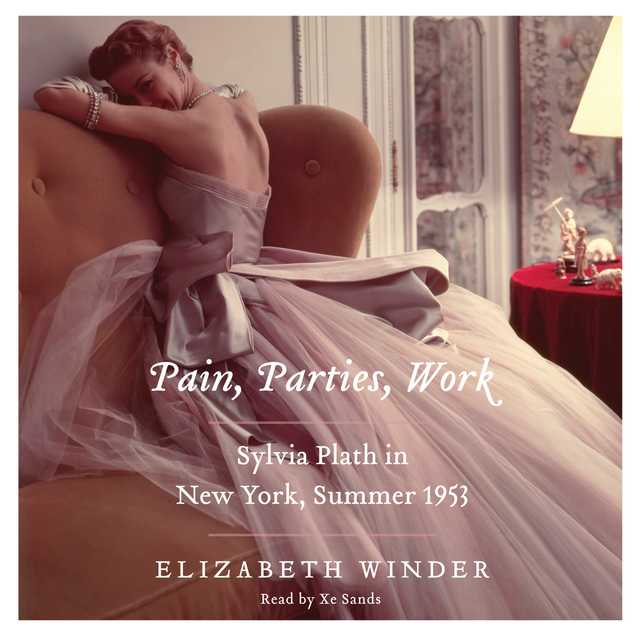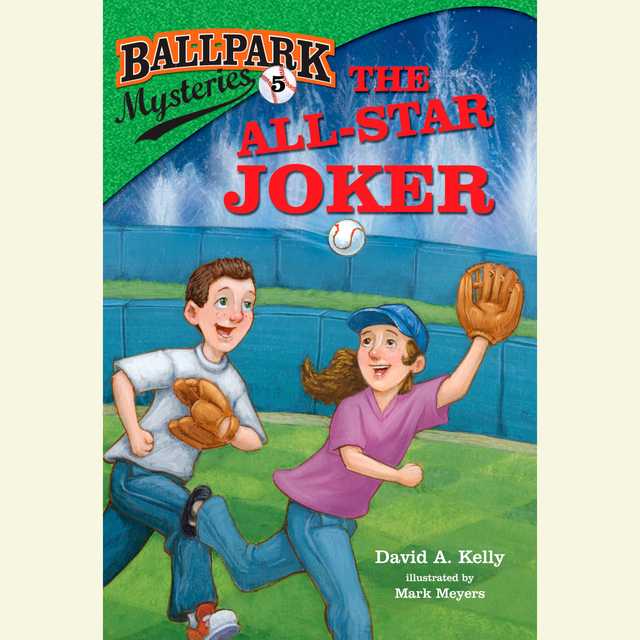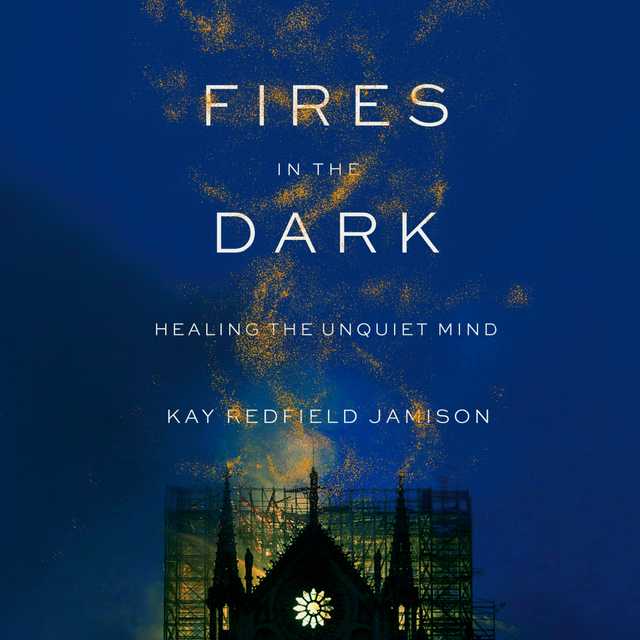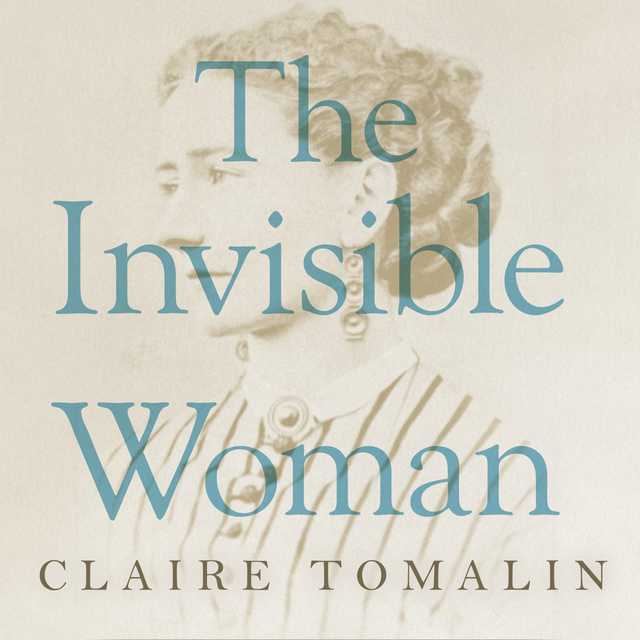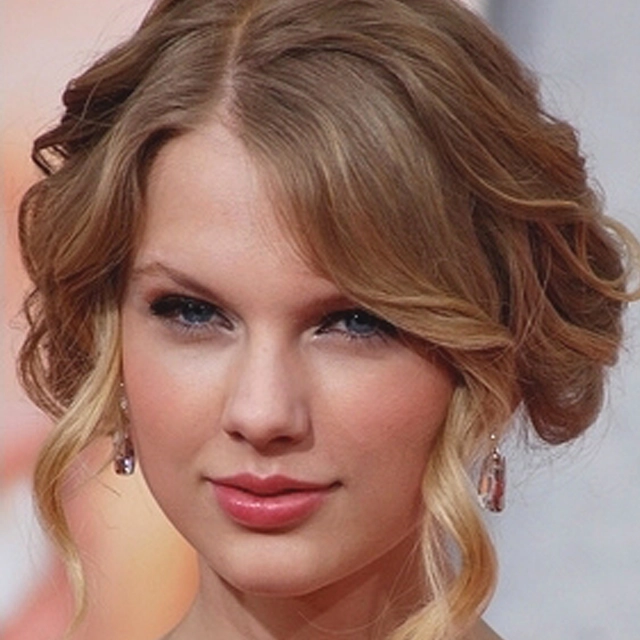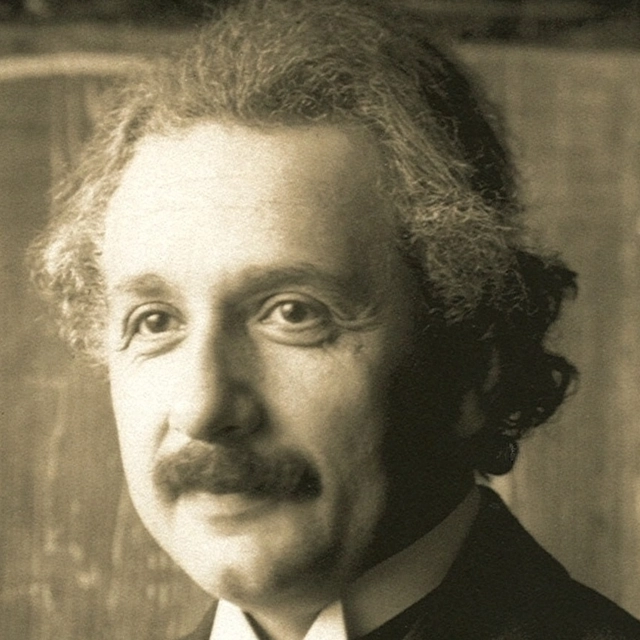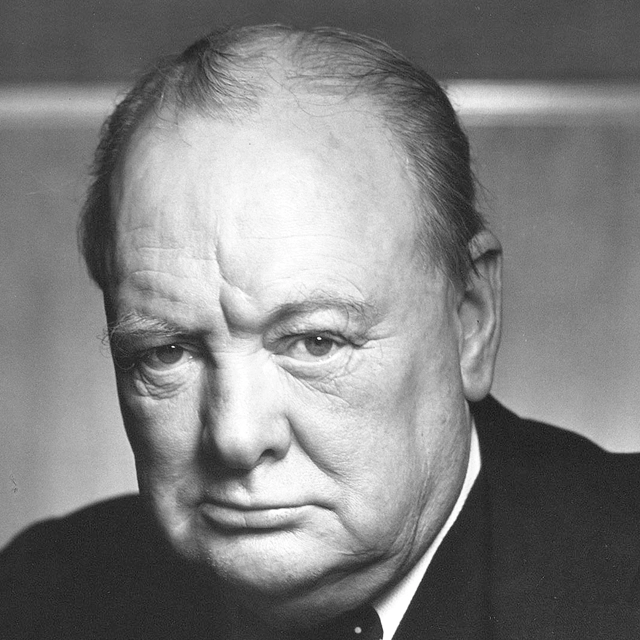Pain, Parties, Work Audiobook Summary
“I dreamed of New York, I am going there.”
On May 31, 1953, twenty-year-old Sylvia Plath arrived in New York City for a one-month stint at “the intellectual fashion magazine” Mademoiselle to be a guest editor for its prestigious annual college issue. Over the next twenty-six days, the bright, blond New England collegian lived at the Barbizon Hotel, attended Balanchine ballets, watched a game at Yankee Stadium, and danced at the West Side Tennis Club. She typed rejection letters to writers from The New Yorker and ate an entire bowl of caviar at an advertising luncheon. She stalked Dylan Thomas and fought off an aggressive diamond-wielding delegate from the United Nations. She took hot baths, had her hair done, and discovered her signature drink (vodka, no ice). Young, beautiful, and on the cusp of an advantageous career, she was supposed to be having the time of her life.
Drawing on in-depth interviews with fellow guest editors whose memories infuse these pages, Elizabeth Winder reveals how these twenty-six days indelibly altered how Plath saw herself, her mother, her friendships, and her romantic relationships, and how this period shaped her emerging identity as a woman and as a writer. Pain, Parties, Work–the three words Plath used to describe that time–shows how Manhattan’s alien atmosphere unleashed an anxiety that would stay with her for the rest of her all-too-short life.
Thoughtful and illuminating, this captivating portrait invites us to see Sylvia Plath before The Bell Jar, before she became an icon–a young woman with everything to live for.
Other Top Audiobooks
Pain, Parties, Work Audiobook Narrator
Xe Sands is the narrator of Pain, Parties, Work audiobook that was written by Elizabeth Winder
Elizabeth Winder is the author of a poetry collection. Her work has appeared in the Chicago Review, Antioch Review, American Letters, and other publications. She is a graduate of the College of William and Mary, and earned an MFA in creative writing from George Mason University.
About the Author(s) of Pain, Parties, Work
Elizabeth Winder is the author of Pain, Parties, Work
More From the Same
- Publisher : HarperAudio
- Abraham
- American Gods [TV Tie-In]
- Dead Ringer
- House of Sand and Fog
- Prey
Pain, Parties, Work Full Details
| Narrator | Xe Sands |
| Length | 5 hours 29 minutes |
| Author | Elizabeth Winder |
| Category | |
| Publisher | HarperAudio |
| Release date | May 28, 2013 |
| ISBN | 9780062293138 |
Subjects
The publisher of the Pain, Parties, Work is HarperAudio. includes the following subjects: The BISAC Subject Code is History, Social History
Additional info
The publisher of the Pain, Parties, Work is HarperAudio. The imprint is HarperAudio. It is supplied by HarperAudio. The ISBN-13 is 9780062293138.
Global Availability
This book is only available in the United States.
Goodreads Reviews
Lindsey
December 21, 2014
"She simply loved food the way she loved so much of the material world: cashmere, caviar, beer--all of it. She loved the colors, wrote in her diary of yellow corn chowder, tuna salad laden with mayonnaise, the dazzling yellow of an egg yolk, the glint of peacock blue inside a raw oyster."A delicious, beautiful book of vignettes detailing twenty-year-old Sylvia Plath's month in New York working as a guest editor for Mademoiselle magazine, a time she later fictionalized in The Bell Jar. I re-read The Bell Jar last spring, and was surprised at how affected I was by it at age 29 (after reading it as a pre-teen and loving it - but obviously not relating to it fully). Then, I wrote: How do you separate the giant looming cult shadow from the writer herself? This book is the answer, or at least a big part of it, for me. The vignettes bring to life a girl who was hungry - literally and metaphorically - for life, for New York, for whole bowls of caviar and beautiful plays and silver strapless dresses and pre-dinner champagne cocktails. A girl who said yes to any date as "an opportunity to practice the Foxtrot and drink Fanta." A preternaturally skilled writer and independent worker who hoisted an enormous amount of pressure on her shoulders and who, it must be said again, was utterly failed by the mental health treatments of her time (electroconvulsive and insulin shock "therapy"). A girl who was disgusted by the misogynistic double standards of her (and still our!) time and tried to resolve the "endless conflict" of "the push and pull of needing solitude and experience" as a woman. A girl who drank Tom Collinses at night in her room "and enjoy(ed) the small luxury of drinking alone in her old gray sweater." In short, a girl who has much in common with me, and with many of the girls I know, and who is portrayed with so much vigor and detail in this book (along with the particular zeitgeist of NYC in the early fifties!) that I practically felt her leaning against my arm as I read. Beautiful, beautiful.
Anaïs
August 09, 2013
"That if you stand still for a moment the world keeps moving, that sometimes no head will turn despite shiny hair and freshly applied lipstick. That many of your peers will want less than you, and that you will envy them for that."This book follows in greatly detailed short chapters/vignettes June 1953, the month Sylvia Plath lived in New York City and was one of twenty guest editors chosen to work on the college issue of Mademoiselle. It follows social interactions, dates, outfits, shopping trips, lunches, meetings, assignments, food poisoning, conversations, everything that happened in that exact time period. It also tells us about Plath's childhood and adolescence, the months that followed her time in New York including her suicide attempt a bit about her later marriage and eventual suicide but mainly we get to know 20-year-old Sylvia, ambitious and anxious and pressured Sylvia, confused about her future Sylvia who methodically plans out her outfits and enjoys fashion and beauty but who is drawn to more serious literary pursuits, pegged there by her own already very apparent talents; we see one girl and so many girls then, all at once.The book jumps around and does not read only in a chronological order, giving us just the necessary facts and quotations to give us a story, no, we get the feeling of what it's like to be Sylvia, what it's like to be a fastidious and disciplined but also occasionally wild girl, a girl who told her mother upon hearing of her father's death that she would never speak to God again, who instead became one with the sea, the ocean, the sun, who was not nearly as distant or pristine as her then reputation or history's Smith girl portrait of her seems to tell: she was all senses and thus, an all new poet. We get lists of her boyfriends, her favorite shampoo brands, lipstick, phobias, all the things from her journal, all the things from a real life lived. She was a genius but what really makes her work seem even more important, more huge, is that she was just like any other girl, a fact often repeated by her fellow guest editors at Mademoiselle.It's weird to think that I have felt like Plath before. I haven't wanted to crawl under my house and take a bottle of sleeping pills but I have felt the pressure to be perfect, to be successful, to do everything right and get what you want only to feel like an impostor, as if you don't deserve the things you have worked for. I have felt things so deeply, in such a powerful way that I can't imagine how I'll survive the next instant. I have felt so depressed that nothing seems real. This is mental illness, this is anxiety, this is societal pressure, this is pressure from loved ones, from ourselves. It's a lot of things that go into being who you are, especially being a woman, and although not entirely to that extent, something felt by most of the women in the Mademoiselle program, especially in 1953. Figuring out a way to find out who you are, to become whoever it is you are, was difficult and if you want to be all things, a wife, mother, a person with a career, well, it was damn near impossible then, especially when not all of those choices were considered the right one. We can have it all, or attempt to now, but it's still so fucking hard. This book is beautiful belongs to the earth with its descriptions of food and clothes and smells and bodies and lipstick. It has a substance you can taste, creating the kinds of memories you still have from teenage summers. Sylvia isn't a victim or hero or symbol, she's just a girl and this is a rush of memory, of senses, of time, of life floating right over you and through you. It's feminine in the way the coppery taste of licking a paper cut is: pungent, metallic, shimmering.
Jason
April 29, 2013
A fascinating glimpse into one summer of Sylvia Plath's life, remembering her as the vivacious and bright young woman she was. The story of Sylvia Plath's work at the magazine Mademoiselle - which provided inspiration for The Bell Jar - this biography is told through memories of other guest editors, her mother, as well as source material from her journals.An illuminating and inspiring, yet of course sad, view into a life of someone immensely talented, who wanted to truly see life.
Barbara A.
March 02, 2013
Intoxicating. Made me want to find and re-read my dog eared copIes of Ariel and The Bell Jar. Not to mention Mary McCarthy's The Group. Kaleidoscopic views of NYC fashion and literary scenes. A side benefit...immersing myself in the clothes and cosmetics and scents of the 50's and 60's. Where's my tube of Cherries in The Snow? My short white kid gloves? My kitten heels?
Rachel
November 27, 2018
This was a phenomenal biography. As someone who was already a massive fan of Sylvia Plath, I was admittedly biased going into this book, but I honestly hadn't gotten my hands on a biography nearly as grand as Shirley Jackson: A Rather Haunted Life in months. I adore biographies and this one was incredibly original due to the extra information Winder. Because she added subsections to this biography, she was really able to help establish personal history as well as extra historical information along with general sidebar details. It was a fantastic way to help make this biography stand out amongst others and also really helped to establish a magazine layout, which was considerably fantastic due to the fact that the summer of 1953 was the month Plath spent working at a magazine. Winder placed intense time and thought into this book. Interviews were held, gathering quotes from a variety of sources. She also dug throughout Plath's journals (which I am so excited to finally dive into) and pulled direct thoughts from the woman. Her writing took real fact and historical setting and helped make a compelling narrative. After having taken a course on creative non fiction, this was such a great example at how to add vivid detail to help strengthen quotes. I thoroughly enjoyed how Winder wove detail into her passages. My only complaints with this biography is that I had expected it to end point blank at the end of 1953. Instead, it crept onwards, briefly skimming over one of her suicide attempts with sleeping pills and her time in treatment. I did enjoy learning about insulin treatment, though, and what exactly that did to the body. However, this book stopped in 1954, well beyond that chaotic summer. It also failed to make any extraordinary comparisons to The Bell Jar in this extended timeline. I also found it odd that Winder failed to mention the ninth chapter of The Bell Jar, where Esther is assaulted and ends up flinging her entire wardrobe off of the building she was staying at. I find few biographies consider the assault she depicts in her book but do connect that it was fact that she did throw her wardrobe off of the building. This is more of a personal issue because that passage has always stood out to me and rarely does anyone mention in articles on her experiences in New York. It was most likely fictionalized but historical comparisons could be connected to rise in violence committed against women in New York during the 1950s or general speculation could be noted. I will admit that this is more of a personal question and less of a flaw of the author. My only other area of complaint is that this book showed a single illustration by Plath and hinted at others that she had completed. I think showcasing other pieces by her would have highlighted what a diverse artist that she was and also credit her studies in art. While she would later favour writing over art, art did have a massive influence on her life and influences. This, despite my few complaints, was a fantastic look into Plath's downward spiral. Winder presented such a keen look into the magazine and lifestyle that Plath was faced with, as well as the influences on 1950s women (and later connections to the second wave of feminism) and also highlighted when Plath began to breakdown. She also demonstrated a creative element to the traditional biography, making the layout so much more interesting. This was simply a marvelous book and something I would highly recommend to any fan of Plath.
Bert
June 02, 2017
"Sylvia Plath was not the incarnation of the mad, obsessed poetess. Sylvia was a golden girl who knew more about living than most."What a joy this book was to read! Everything that I've read about Sylvia Plath has been focused on either her poetry or her later life as a depressed, suicidal, mad woman, so reading this book which is all about her time as a carefree, fun and frivolous college girl was really quite a treat. Anyone who has read The Bell Jar (my all time favourite novel and one that has never once been out of print) knows that the story is semi-autobiographical and in this book we see the story that eventually led to Miss Plath writing that story. During the summer of 1953, Sylvia Plath and 18 other young college ladies trek to New York, stay at the Barbizon Hotel for Women and intern for Mademoiselle Magazine, something that Sylvia recalled as being 4 weeks of Pain, Parties and Work. It's during these 4 weeks that we get to know a very different Sylvia to what we generally hear about, she was a young woman who was so excited for the future and was thrilled to be working for one of the biggest magazines of the time. Not only is this a really great book about Sylvia Plath, it's also a fantastic look at young professional women of the 1950s, so often women would go to college, get a great education and then get married, have kids and not use that college degree. The women portrayed in this book though are something else entirely, they wanted more out of life and they went out and found it which was something that I found really refreshing. All the talk of fashion shows, makeup, cocktail lunches and nights at the ballet had me dreaming of a time when women were ladies and men were gentlemen, glorious.As an avid reader of The Bell Jar I found so many similarities with the first half of Esther's story and that of Plath during her time at Mademoiselle, this book is a really nice companion piece to The Bell Jar and essential for all fellow fans. It's a very easily read, meticulously researched, beautifully written and just all round lovely look at the happy side of Sylvia Plath. Absolutely loved it!
Freesiab
August 04, 2017
PAIN, PARTIES, WORK Is about the summer Sylvia Plath lived and worked in NYC in 1953. The end culminating in her suicide attempt and writing THE BELL JAR. If you're looking to read a deep look into depression, this is not that book. This book is about the Sylvia that loved fashion and wanted to be a fashion magazine editor. What her social life was like. It uses her writings and interviews from the women she lived with. It's done quite beautifully and a lovely new look at Plath. It may not be the most literary book but if found it insightful and original.
Feuerrede
August 31, 2022
PIĘKNE.To wszystko, co mogę napisać.Nie 5/5 a 10/10
Gitte - Bookworm's Closet
November 03, 2014
Sylvia rarely flattered the men in her life – she envied them. She was far more likely to compete with a man than a woman. The Beginning: Her room was the size of a decent closet – beige walls trimmed in maroon paint.I’ve been dying to read this books since I first heard of it. I adore The Bell Jar, I think it’s an amazing story. To those of you who haven’t read The Bell Jar or who don’t remember it very well, here’s a recap: It’s Sylvia Plath‘s semi-autobiographical novel of a young woman who becomes guest editor on a magazine in New York in the early 50s. For a few weeks, her life becomes glamorous and exciting, but our heroine is slowly falling apart, torn between her ambitions (she wants to be a writer) and society’s expectations of her (i.e. becoming a housewife). The novel is about her downfall and her slow recovery, and ends on a happy note. A few weeks after the novel was published, Plath committed suicide.With headlines like “Marry Now or Never,” the specter of marriage loomed. It was a constant fear, a threat, a reminder. But Sylvia wasn’t baited by those pretty tales of line and hook: the bride-white cake, the prime rib and steak, marriage- that bleak fable- with Husband cast as warden, the future dead clear and blighted.There’s something intriguing about a girl supposed to be having the time of her live, falling apart instead. Sylvia Plath has fascinated me since I read The Bell Jar for the first time. In Pain, Parties, Work, Elizabeth Winder tries to depict what really happened that summer in New York, what the other girls on the magazine thought of Sylvia, the work they had to do, their ambitions and how they felt about the way they were described in The Bell Jar.When I was doing the Mademoiselle application my husband would peer over my shoulder and say, “What are you doing competing with the best brains in the country? Why don’t you just wash the dishes?” When the telegram came from Mademoiselle, I ran outside and shouted, “Guess who has the best brains in the country?The first thing that struck me about this book was Winder‘s beautiful writing. Time stopped as I read the first lines, forcing me to read slowly and carefully, rereading certain lines. Winder brilliantly describes the atmosphere, the glamour; I could almost feel the rush from the parties and taste the champagne.“Sylvia and I were walking down the street. We couldn’t get across because it was crowded with cars and the traffic had stopped. So we saw a man in a cab, and just walked right up to the door and opened it, and asked if we could slide across the seat and go out the other side. And whoever he was just said, ‘Come along with me’. Of course we never went out the other side – we ended up having a few drinks with him.”I’ve always had a soft spot for books that bestow extra information and anecdotes to a story you already adore. It almost felt like hunger when I opened Pain, Parties, Work for the first time. It had some amusing stories, clever musings and gorgeous pictures.Before New York, the cracks were already there, but now they began to split open and gape, and the difference between how a thing or a place or a person appears and the reality becomes alarmingly visible, garish.Pain, Parties, Work was more about fashion and culture than I’d expected. I know it’s a huge part of the story, but I would have preferred more focus on Sylvia’s state of mind. There are limits to how much talk of lipsticks I can take – even though I do love the red little bastards.Above all, Sylvia prized beauty and form. She was addicted to beauty, devoted to beauty – she worshipped Beauty. She often bought books for their color and texture. Even her boyfriends were classically handsome. She cut away at her life until it fit the gorgeous blueprint she made for it.For more reviews and book talk, please visit The Bookworm's Closet
Debbie
November 25, 2014
At a quick glance this book is all about fashion, makeup, parties, interviewing celebrities - in short being one of 20 female guest editors for Mademoiselle magazine in June 1953. Except of course it isn’t. It is much more. Not only does Pain, Parties, Work offer real insights into the demands made on the young Sylvia Plath but it it chronicles the conflicting messages that young women were bombarded with by the media and by social pressure in the mid Twentieth Century. “Sylvia was in a hurry to grow up, but she wasn’t the only one. In 1953, the term “young lady” could have been reversed: Plath and her generation were ladies first-they just happened to be young.”“You were not going anywhere in town without a hat. You had to look like a young lady...white gloves too.” Ann Burnside, guest editor.Unfortunately for Sylvia she was made guest managing editor. “Underneath the glamorous varnish of the job Sylvia found it demeaning. Besides, she was not well suited to editorial work-her deceptively fastidious persona belied a nature better suited to something wild and trackless... Sylvia had expected more dazzle and glamour... In reality she was spending hours chained to a makeshift desk. Long hours with Cyrilly Abels isolated Sylvia from the other girls and estranged her form the everyday communal buzz of Mademoiselle office life and the three o’clock clink of vodka and ice in (Betsy Talbot Blackwell) BTB’s office. She felt painfully excluded from the frippery and fun.” And so the beginnings of her feelings of isolation and failure began. Piecing together details from Sylvia’s journals, reminiscences from the other surviving guest editors and sourcing the Mademoiselle issue that Sylvia contributed to, Elizabeth Winder builds up the heady world that Plath inhabited for twenty six days in June 1953. All I can say is, no wonder she had a breakdown! Recommended for readers fascinated by one of the greatest poets of the century.
Geena
August 04, 2014
Elizabeth Winder's "Pain, Parties, Work: Sylvia Plath in New York, Summer 1953" chronicles Plath's one month long stint as an intern at Mademoiselle magazine in New York city. In her thoughtful, beautiful prose, Winder provides insight to Sylvia's dynamic personality. Sylvia Plath is often pigeon-holed as a doomed, tragic, depressed poetess, but fortunately Winder outwardly dismisses that convention, presenting the "true" Sylvia to readers, one who was capable of understanding and thriving in great darkness AND in great light. Like drug addicts, people are more than their problems, and Sylvia was so much more than her depression. Winder is one of the few biographers that truly does Sylvia justice, showcasing Sylvia in all of her volatile, capricious glory. The only criticism I have of Winder's novel is that I believe it would have been more coherent if she had left out some of the lengthy descriptions and chapters devoted to style and fashion in the 1950s where it didn't relate back to Plath. While interesting, I didn't feel the need to know about how men preferred crew cuts and how city women preferred the matte look over the beach bronzed look. When Winder related the style and fashion of the time back to Plath directly or through the examination of the social and political constructs of the time, I found the descriptions relevant and intriguing. The passages where Winder failed to establish any connection back to Plath were ones I would have liked to see taken out. Overall, this was an absolutely fascinating read that I thoroughly enjoyed. Reading "Pain, Parties, Work" inspired me to pick up Mary McCarthy's "The Group" and other similar works centering around women coming-of-age in the 1950s, male-dominated work force. Winder manages to elevate Plath to startlingly new heights, portraying her as even more beautiful, enigmatic, and vivacious than before.
Serena
April 18, 2013
Pain, Parties, Work: Sylvia Plath in New York, Summer 1953 by Elizabeth Winder is atmospheric and an indulgent retrospective of the lives of Mademoiselle‘s summer guest editors, who were hand picked from a bunch of college essays and pieces submitted by college women. The magazine was not only known for its fashion and celebrities, but also for the writing it published from heavyweights like Dylan Thomas and Truman Capote. Additionally, the magazine published its college issue. “Sunday at the Mintons” by Sylvia Plath, a short story, earned her a guest editorship at the magazine, a summer that became the basis of her novel, The Bell Jar. Winder bases her “loose” biography on interviews with those summer guest editors and others who had contact with Plath that summer, which are backed up by letters and journal entries from Plath herself as much as possible — though there is the pitfall that some memories may be nostalgic or missing certain truths about that time as memories fade.Read the full review: http://savvyverseandwit.com/2013/04/p...
Cristina
June 16, 2013
Oof, I loved this book. (Maybe minor spoilers?) I've been waiting for a book like this, actually, since The Bell Jar has always intrigued me. While Winder seemed tempted to write an overly positive portrayal of Sylvia, she brought in voices from Sylvia's Mademoiselle trip which really gave a through and varied description of her. Winder also included a lot of "fun facts" about Sylvia's favorite things and habits. The book, overall, painted a lovely picture of Sylvia: a girl who loved avocados, hated double standards and yet gave in to them, and wrote a controversial version of her friend in The Bell Jar. Most interesting, however, was this book's portrayal of Sylvia's first breakdown. I never knew how much of The Bell Jar was autobiographical and how much was exaggerated/fictional, and this book made the line clear. Which makes it, of course, very heartbreaking.
Quinn
October 26, 2015
Sylvia Plath is my favourite author, and as such I've read a number of books about her. But this was unlike any of the others, because it focused on such a specific period of time. It frustrates me how much her death overshadows every other element of her, so it was refreshing to read a book that didn't have to discuss it at all. I read this book as research for my NaNoWriMo novel this year, and it did provide insight into the areas relevant for my book. The author could get a little overly focused on seemingly trivial matters at times (so much discussion of clothes!), but overall I found the book interesting and helpful.
Yolo
March 27, 2016
Loved it. This is a great read to go with "The Bell Jar," as it explores the true story of the summer explored in "The Bell Jar." I really like how the author played with the format of the story. The chapter of the Glossary is particularly fun to read. I feel the author did a great job of trying to capture the spirit of the summer of 1953. Recommended for anyone read "The Bell Jar" or is interested in Sylvia Plath.
Sarah
June 25, 2013
Maybe a little too cute for its own good, but I just loved reading this. Divine setting and exquisite historical details in my favorite kind of biography: breezy, frothy and not exhaustive.
Most Popular Audiobooks
Frequently asked questions
Listening to audiobooks not only easy, it is also very convenient. You can listen to audiobooks on almost every device. From your laptop to your smart phone or even a smart speaker like Apple HomePod or even Alexa. Here’s how you can get started listening to audiobooks.
- 1. Download your favorite audiobook app such as Speechify.
- 2. Sign up for an account.
- 3. Browse the library for the best audiobooks and select the first one for free
- 4. Download the audiobook file to your device
- 5. Open the Speechify audiobook app and select the audiobook you want to listen to.
- 6. Adjust the playback speed and other settings to your preference.
- 7. Press play and enjoy!
While you can listen to the bestsellers on almost any device, and preferences may vary, generally smart phones are offer the most convenience factor. You could be working out, grocery shopping, or even watching your dog in the dog park on a Saturday morning.
However, most audiobook apps work across multiple devices so you can pick up that riveting new Stephen King book you started at the dog park, back on your laptop when you get back home.
Speechify is one of the best apps for audiobooks. The pricing structure is the most competitive in the market and the app is easy to use. It features the best sellers and award winning authors. Listen to your favorite books or discover new ones and listen to real voice actors read to you. Getting started is easy, the first book is free.
Research showcasing the brain health benefits of reading on a regular basis is wide-ranging and undeniable. However, research comparing the benefits of reading vs listening is much more sparse. According to professor of psychology and author Dr. Kristen Willeumier, though, there is good reason to believe that the reading experience provided by audiobooks offers many of the same brain benefits as reading a physical book.
Audiobooks are recordings of books that are read aloud by a professional voice actor. The recordings are typically available for purchase and download in digital formats such as MP3, WMA, or AAC. They can also be streamed from online services like Speechify, Audible, AppleBooks, or Spotify.
You simply download the app onto your smart phone, create your account, and in Speechify, you can choose your first book, from our vast library of best-sellers and classics, to read for free.
Audiobooks, like real books can add up over time. Here’s where you can listen to audiobooks for free. Speechify let’s you read your first best seller for free. Apart from that, we have a vast selection of free audiobooks that you can enjoy. Get the same rich experience no matter if the book was free or not.
It depends. Yes, there are free audiobooks and paid audiobooks. Speechify offers a blend of both!
It varies. The easiest way depends on a few things. The app and service you use, which device, and platform. Speechify is the easiest way to listen to audiobooks. Downloading the app is quick. It is not a large app and does not eat up space on your iPhone or Android device.
Listening to audiobooks on your smart phone, with Speechify, is the easiest way to listen to audiobooks.

